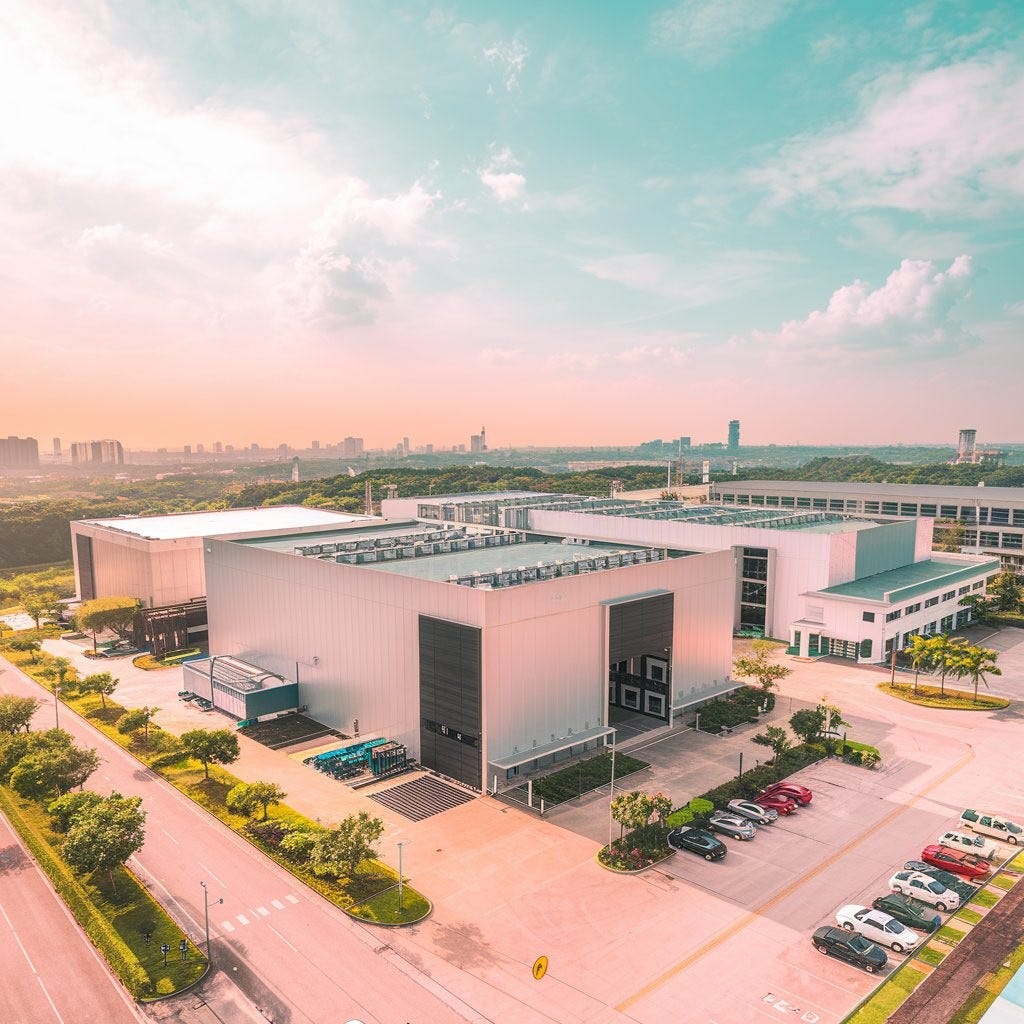The Philippines Just Launched Its First AI Hyperscale Data Center — And It Could Change Southeast Asia’s Digital Map
Welcome to Global Data Center Hub. Join 1000+ investors, operators, and innovators reading to stay ahead of the latest trends in the data center sector in developed and emerging markets globally.
On April 23, 2025, something historic happened in Laguna.
The Philippines officially launched VITRO Sta. Rosa (VSR) — its first GPU-powered, AI-first, hyperscale data center.
This wasn’t just a ribbon-cutting ceremony.
It was a signal to the world:
“We’re open for AI business — and ready to compete.”
And in a region where Indonesia, Malaysia, and Vietnam are racing to attract cloud giants and AI investments, this launch might have just reset the playing field.
A New Benchmark for AI Infrastructure in Southeast Asia
VITRO Sta. Rosa isn’t your average data center:
50 MW load capacity (with power already provisioned)
13,000 sqm of white space
Tier 3 redundancy — built to withstand failures with 99.982% uptime
11-layer security system — among the most secure in the region
GPU-as-a-Service (GPUaaS) powered by NVIDIA chips
Carrier-neutral architecture with at least 3 redundant fiber routes
More importantly:
It’s been fully operational since July 2024 and is already serving telcos, cloud providers, and enterprises.
This isn’t a marketing slide. It’s live infrastructure.
Why GPUaaS Is the Real Breakthrough
The most exciting feature?
VSR introduces the first-ever GPU-as-a-Service platform in the Philippines.
That means enterprises, fintech firms, hospitals, and even government agencies can now:
Train and deploy AI models
Analyze massive datasets
Accelerate innovation
…without buying expensive GPU hardware.
This is cloud-like access to world-class AI computing.
For a nation of 115M people, that’s game-changing.
Subsea Cables + Local Fiber = Global Performance
Location matters in digital infrastructure. And so does connectivity.
VITRO Sta. Rosa is deeply integrated with PLDT’s fiber backbone and linked to three major subsea systems:
JUPITER
Asia Direct Cable (ADC)
Apricot (coming online soon)
These links connect the Philippines directly to the U.S., Japan, Hong Kong, and beyond — offering hyperscalers the latency, redundancy, and resilience they require.
It also gives the Philippines a unique advantage:
It’s not landlocked, nor locked out of the global internet economy.
Why This Facility Matters More Than the Specs
President Marcos didn’t just attend the event — he positioned it as a national turning point.
“This data center is for the student conducting research, the small business scaling online, the overseas worker connecting with family. It is for all Filipinos.”
PLDT’s chairman followed with an even bigger statement:
“We’re targeting 500 MW of data center capacity to match — or surpass — Malaysia.”
That’s not a small ambition.
For context:
Malaysia has 300–400MW in active development
Indonesia is approaching 200–300MW
The Philippines just jumped from <10MW to a globally competitive 50MW in one move
What Comes Next?
PLDT has already confirmed that its 12th data center will be located in General Trias, Cavite, with:
100 MW planned capacity
Phase 1 starting at 20 MW in 2026
Full launch expected by 2028
In parallel, the government is ramping up digital support:
National Fiber Backbone launched its first phase in 2024
Free Public Internet Access Program is scaling
The Digital Workforce Competitiveness Act is preparing a next-gen tech talent base
This isn’t just private sector ambition.
It’s part of a national digital strategy.
What This Means for Investors and Operators
If you’re an AI builder, hyperscaler, infrastructure investor, or operator, here’s what to watch:
1. New Market Entry Points
The Philippines just became viable for Tier 1 compute workloads. Look beyond Manila — Laguna, Cavite, and South Luzon are emerging as power-fiber land corridors.
2. GPUaaS Business Model
GPUaaS in emerging markets could become the dominant model. Why? Because it bypasses capex constraints and meets surging demand for AI.
3. Competitive Pressure on Indonesia and Malaysia
Expect other Southeast Asian markets to accelerate approvals, incentives, and partnerships in response. The regional AI land grab just intensified.
Bottom Line:
VITRO Sta. Rosa isn’t just the Philippines’ first AI-ready hyperscale data center.
It’s a strategic beachhead in Southeast Asia’s digital future.
And if PLDT delivers on its 500MW roadmap, the Philippines could leap from digital back-office to regional AI infrastructure heavyweight — faster than anyone expects.
One More Thing
I publish daily on data center investing, AI infrastructure, and the trends reshaping global data center markets.
Join 1000+ investors, operators, and innovators getting fresh insights every day and upgrade anytime to unlock premium research trusted by leading investors and developers.

